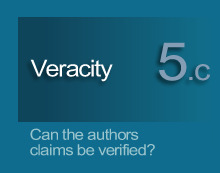"... Western science grew out of Christian theology. It is probably not an accident that modern science grew explosively in Christian Europe and left the rest of the world behind."
- Freeman Dyson
"For example four men who perhaps did as much as any to revolutionise the mathematical sciences in the 16th and 17th Centuries, Copernicus, Kepler, Galileo, and Newton, were all deeply religious Christians who in many ways saw their scientific work as a religious undertaking."
- J.J. O'Connor and E.F. Robertson
How do science and the Bible compare?
3) scientific accuracy
"What gods are there, what gods have there been, that were not from man's imagination?"
- Joseph Campbell
"There is no such source of error as the pursuit of absolute truth."
- Samuel Butler
5.5 The Bible and scientific accuracy.
-- WHAT IS THE CONTEXT?
The Bible does not set itself up to be understood as a written collection of hand-me-down tales, but to be taken as direct inspirations of the living God. If it is completely true, its truth corroborates its claim of divine inspiration.
At the same time, the Bible neither sets itself up as a scientific textbook. The Bible conveys reality accurately, but within the context of its ancient audience. As such, there is no point in combing the Bible for a periodic chart of the elements, or checking to see if it carries all of its figures out to sixteen decimal places.
-- ANSWERING THE MOST CITED EXAMPLE OF INACCURACYThe verse nearly every skeptic on the internet uses in trying to disprove the scientific accuracy of the Bible is found in 1 Kings 7:23:
He made the Sea of cast metal, circular in shape, measuring ten cubits from rim to rim and five cubits high. It took a line of thirty cubits to measure around it.
The charge is that the relationship between the circumference and diameter indicated in this passage is thirty to ten (three); not the actual figure of pi. The conclusion is that this constitutes a mistake in the Bible which, in turn, proves its unreliability. The response to this is two-fold.
First, the actual figure of pi (3.14159...) is a transcendental figure that continues beyond the decimal point to no end. Therefore, any real number with which the Bible responds, or even the skeptic, will be incomplete.
Second, skeptics who believe that this passage proves the Bible's inaccuracy have jumped to the conclusion that it is the outside of the ring that is being measured. A careful reading of the entire passage reveals that verse twenty-six of the same chapter gives the thickness of the circle as one handbreadth.
Thus when two four-inch handbreadths are subtracted from the exterior diameter of the circle (one from each side), the relationship being given is revealed to be for the inside of the circle. This works out to 3.14 - a very reasonable rounding of pi.
- Circumference = 30 cubits (1 cubit=18") or 30 x 18 = 540"
- Diameter = 10 cubits (180") less one handbreadth per side (2 x 4") = 172"
- Circumference/Diameter = 540/172 = 3.1395
If the four-inch width assumed for a single handbreadth is increased as little as one-sixteenth inch, then the rounding is even closer.
The biblical authors' presentation of figures such as pi does not suggest incompetency any more than hearing the weather report in only whole numbers, or using the word "sunrise", or Dr. Sagan's writings that declare the surface of the sun to be 6,000 degrees (Cosmos, Random House, 1980, p. 225). Instead of questioning if the sun is 6,000 degrees exactly, everywhere, and always, it is sufficient to understand the context in which the figure is being presented.
It is the context that determines the proper rounding of the figures in question. In the context of the Old Testament's description of the beauty of the furnishings in the temple of the Most High God, two decimal places are quite sufficient.
One additional observation here: because understanding the two verses quoted at the beginning involves reading a third verse which is less than a paragraph away, the reasoning ability of the skeptics who circulate this so-called error is in question. They are passing judgment on an 800,000+ word collection of writings based on reading not much more than two verses, if they indeed read the Bible at all.
If they are finding the popular list of 100 or so Bible errors found on countless atheism sites, and gleefully assuming them to be valid, their assumption is demonstrating the blindest of faiths. To such freethinkers, I say read the Bible for yourself. Look for truth in facts and evidences, and in logic and study. Think for yourself.
See also:
Have critics discredited the early manuscripts?
200,000 errors in the Bible?


Expanded!
WHY THIS CHAPTER?
If the Bible claims to be trustworthy, but contains clear scientific or arithmatic mistakes, then it cannot be believed.
This section addresses the Bible's scientific accuracy.
(More examples of so-called errors in the Bible here.)